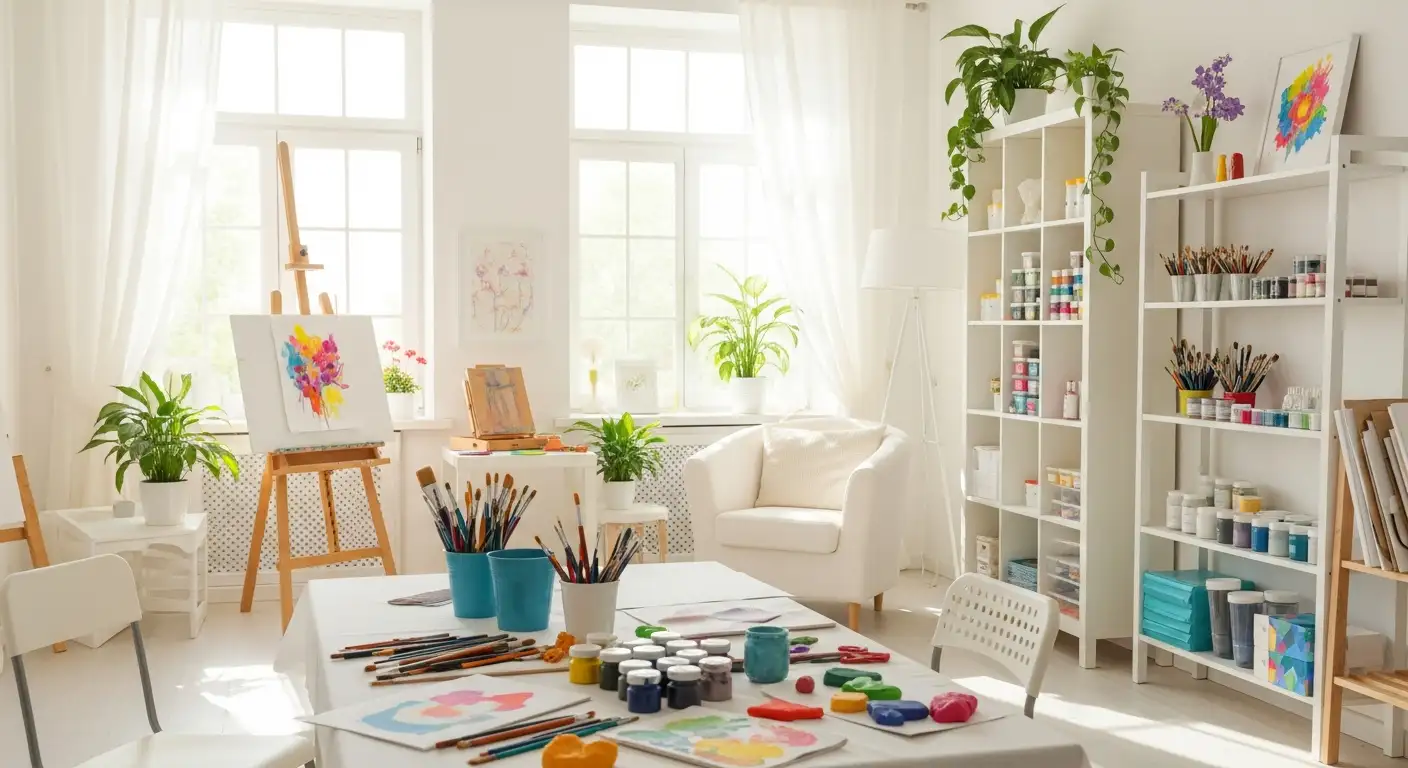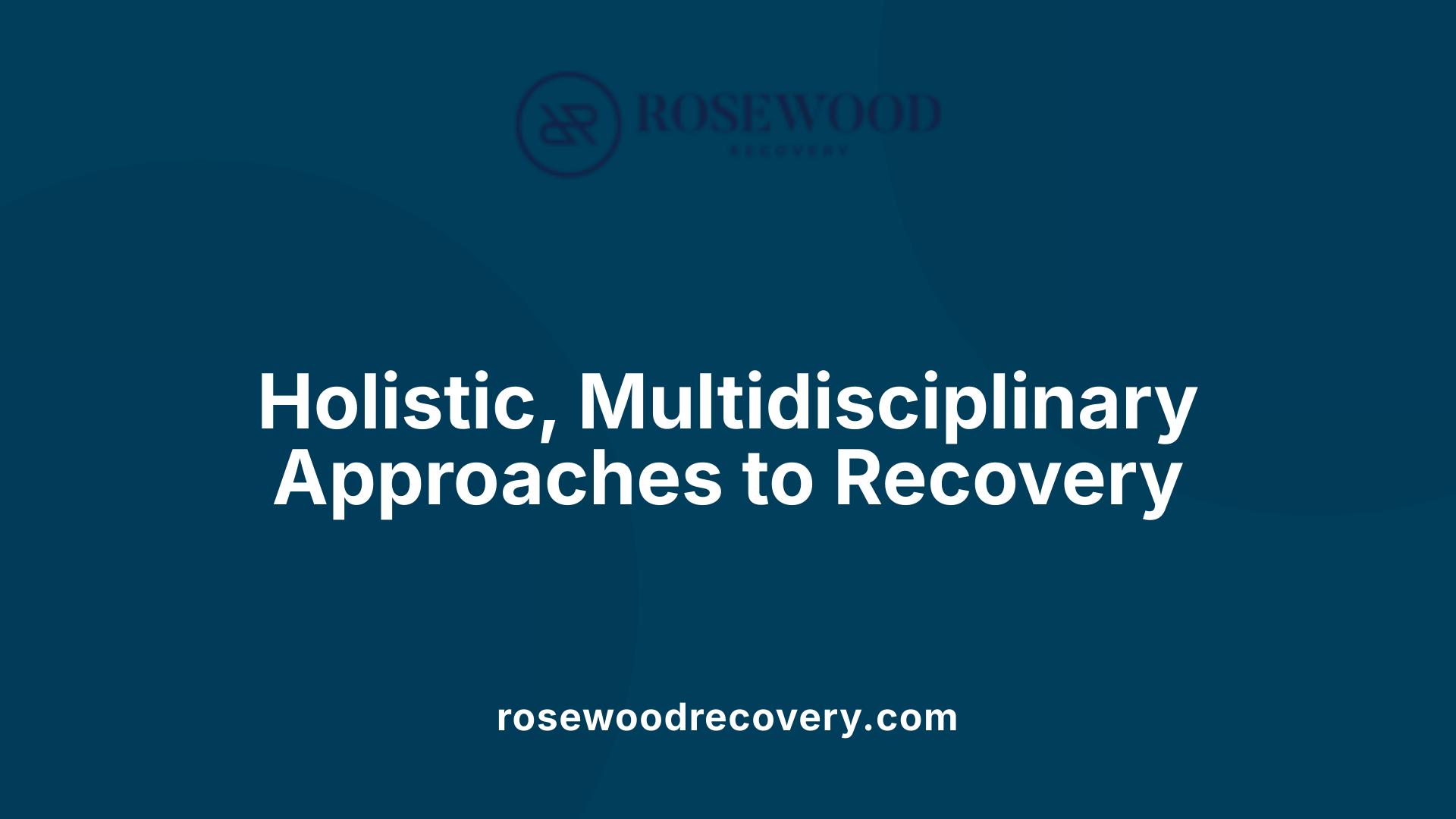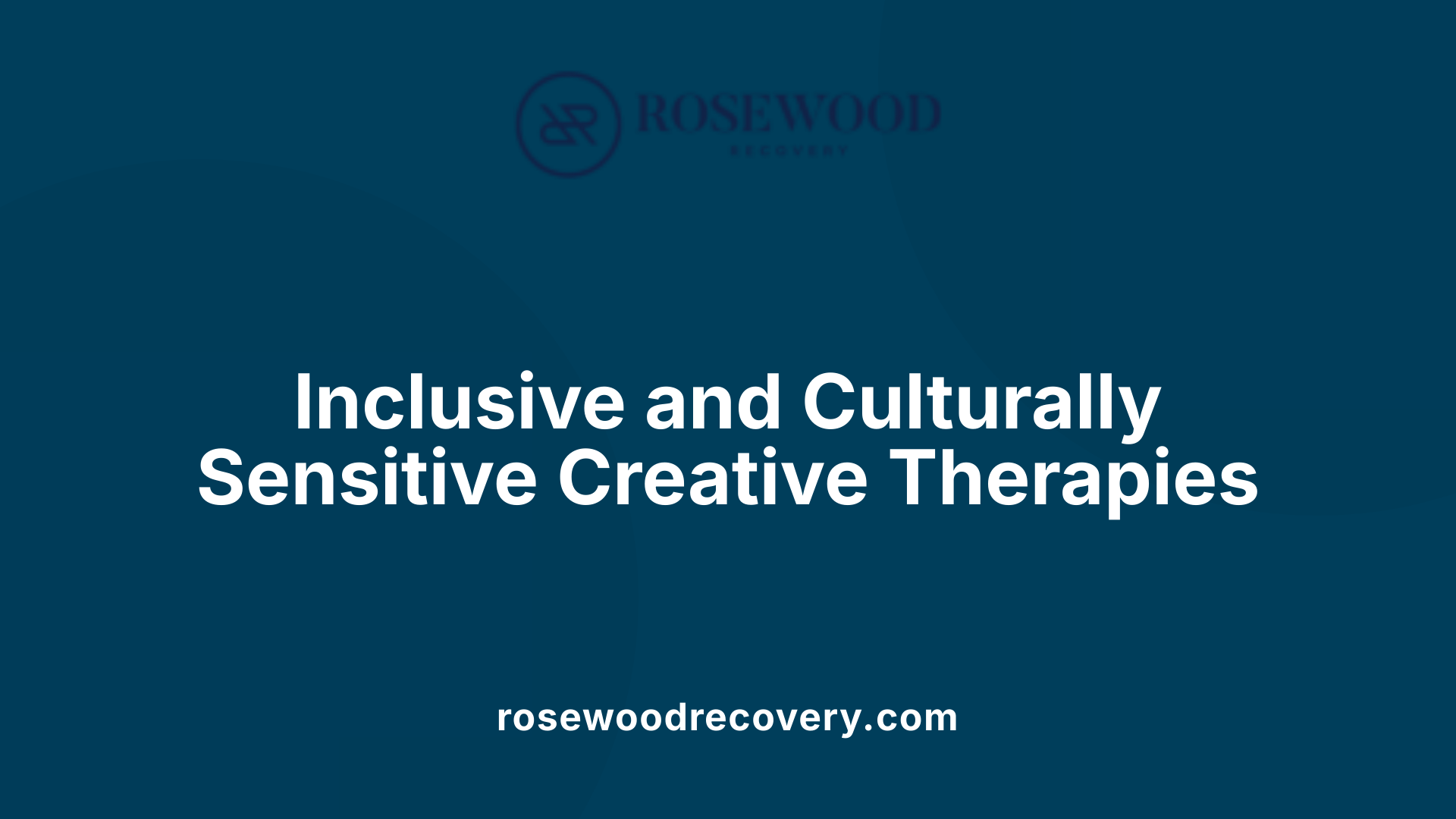Benefits of expressive arts therapy for addiction
Unlocking Recovery: How Expressive Arts Transform Addiction Treatment

Exploring a Healing Path Beyond Words
Addiction recovery often demands more than traditional talk therapies. Expressive arts therapy, encompassing art, music, dance, and drama, offers a powerful non-verbal avenue for emotional expression and healing. This article delves into the benefits of expressive arts therapy in comprehensive substance abuse treatment, highlighting how creative expression supports mental health, fosters resilience, and enhances long-term recovery outcomes.
Understanding Comprehensive Treatment Services for Substance Abuse

What are comprehensive treatment services for substance abuse?
Comprehensive treatment services for substance abuse encompass a broad, multidisciplinary approach designed to address the complex needs of individuals struggling with addiction. These services target physical dependence, mental health, and social aspects of recovery to provide well-rounded care.
Components addressing physical, psychological, and social factors
Physical treatment may include detoxification and medication-assisted therapies such as methadone or buprenorphine. Psychological components often involve behavioral therapies like Cognitive Behavioral Therapy (CBT), Motivational Interviewing, and counseling to support emotional and mental well-being. Social factors are addressed through family counseling, peer support groups, and community resources that foster connection and sustainable recovery.
Multidisciplinary approaches and specialized programming
Treatment programs can range from outpatient to residential care, incorporating holistic strategies like creative arts therapies to assist emotional regulation and trauma processing. Specialized programming is tailored for populations such as pregnant women, seniors, or culturally specific groups, ensuring individualized support. These services often integrate harm reduction methods and aftercare planning, promoting long-term wellness and relapse prevention.
By offering a combination of clinical interventions and supportive social services, comprehensive treatment programs work to empower individuals on their journey toward recovery with a focus on healing the whole person.
Common Therapies in Addiction Treatment: Behavioral to Holistic Approaches

What types of therapies are commonly used to treat various forms of addiction?
Addiction treatment commonly involves multiple therapy types tailored to individual needs. Behavioral therapies such as Cognitive-Behavioral Therapy (CBT), Dialectical Behavior Therapy (DBT), and Motivational Interviewing help individuals recognize triggers, develop effective coping skills, and strengthen commitment to change.
Family and group therapies are also pivotal, enhancing communication, repairing relationships, and fostering essential social support networks that boost recovery success.
Holistic therapies complement these approaches by addressing emotional and psychological healing through creative and experiential means. Art therapy, music therapy, and other expressive arts therapies offer non-verbal outlets for emotional expression, stress reduction, and increased self-awareness. These therapies promote relaxation, emotional regulation, and resilience, often integrating with traditional methods to balance the mind and body.
Other specialized treatments like biofeedback, Eye Movement Desensitization and Reprocessing (EMDR), NAD therapy, yoga, meditation, and mindfulness are sometimes incorporated to tackle underlying neurobiological and psychological complexities.
Ultimately, addiction treatment is most effective when therapies are combined thoughtfully, creating individualized plans that support holistic healing and sustainable recovery.
Addressing Co-Occurring Substance Abuse and Mental Health Disorders Through Integrated Care
How do treatment programs address both substance abuse and mental health issues simultaneously?
Treatment programs tackle co-occurring substance abuse and mental health disorders through integrated care models. These models coordinate psychiatric treatment, addiction counseling, and therapies—like cognitive-behavioral therapy (CBT) and motivational interviewing—tailored to each individual’s stage in recovery. This comprehensive approach minimizes care fragmentation, ensuring patients receive seamless supports whether in outpatient, residential, or day treatment settings.
Integrated care uses evidence-based, stage-wise interventions focused on both mental health symptom relief and substance use reduction. Family involvement is emphasized to provide ongoing emotional support and enhance recovery outcomes.
Creative arts therapies, including art, music, and movement therapies, are increasingly incorporated within these programs. They facilitate emotional regulation, foster self-awareness, and enhance coping skills—key factors in managing dual diagnoses. Group expressive therapy activities also build social connections, vital for sustained recovery.
Research indicates that combined treatment modalities lead to improved stability, reduced psychiatric symptoms, and lower relapse rates. By addressing mental health and addiction simultaneously within a coordinated framework, programs boost the chances of long-term success and personal growth for individuals facing these challenges.
The Role of Expressive Arts Therapy in Addiction Recovery
What is Expressive Arts Therapy and What Forms Does It Take?
Expressive arts therapy is a psychotherapy technique that uses various creative activities to aid emotional healing and psychological growth. It encompasses multiple art forms including visual arts (painting, drawing, sculpting), music therapy (songwriting, music listening), drama therapy (role-playing, storytelling), dance/movement therapy, poetry therapy, and other integrative arts like sand play and dance drumming circles.
These therapies focus on the process of creative expression rather than artistic skill, making them accessible to all individuals regardless of their talent.
How Do Non-Verbal Expression and Emotional Processing Occur?
This type of therapy offers clients a non-verbal outlet to convey complex feelings tied to addiction, trauma, anxiety, and depression. By engaging in creative activities, individuals can explore and safely express emotions they may find difficult to articulate through words alone.
Creative arts therapies promote relaxation, mindfulness, and emotional regulation while also fostering self-awareness and insight into triggers and behaviors related to substance use disorders. They help reduce symptoms of anxiety, depression, and PTSD, supporting overall mental health.
How is Expressive Arts Therapy Integrated Into Addiction Treatment Plans?
About 36.8% of substance abuse treatment programs in the U.S. incorporate art therapy alongside traditional interventions. These therapies complement evidence-based treatments like Cognitive Behavioral Therapy (CBT) and 12-step programs by providing alternative pathways for healing.
Expressive arts therapies enhance emotional regulation, coping skills, community building, and motivation for change. Group sessions also foster social support among participants, crucial for sustained recovery. Integration varies but can include combining creative sessions with motivational or acceptance and commitment therapies, and tailoring approaches culturally to maximize engagement.
| Aspect | Description | Benefits in Addiction Recovery |
|---|---|---|
| Forms | Visual arts, music, drama, dance, poetry, movement | Facilitates self-expression, insight, and emotional release |
| Emotional Processing | Non-verbal communication channels for trauma, shame, guilt | Enhances emotional regulation, decreases anxiety and depression |
| Treatment Integration | Used alongside CBT, 12-step programs, motivational therapies | Builds coping skills, community support, reduces relapse risk |
Emotional and Psychological Benefits of Art Therapy in Addiction Treatment
How does art therapy contribute to stress reduction?
Art therapy utilizes creative activities such as painting, music, and movement to promote relaxation and mindfulness. These artistic outlets help reduce stress hormones, enabling patients to experience emotional calmness. Engaging in art-making allows clients to express and release feelings non-verbally, which can ease anxiety and depression often related to addiction recovery.
In what ways does art therapy support emotional regulation?
Art therapy teaches individuals to recognize, express, and manage their emotions healthily. Through activities like drama, poetry, and dance/movement therapy, clients develop coping mechanisms that foster self-control and prevent relapse. These creative exercises cultivate emotional resilience by providing an outlet for safely confronting difficult feelings including shame, guilt, or trauma.
How does art therapy enhance self-awareness and resilience?
Creative arts therapies encourage self-exploration and insight, allowing individuals to understand their behaviors, triggers, and emotional patterns more deeply. This increased self-awareness builds emotional resilience, empowering clients to navigate challenges in recovery. Additionally, participating in group art therapy sessions fosters social support, strengthening recovery motivation.
How does art therapy assist in processing trauma and addiction triggers?
Using non-verbal mediums like clay work, storytelling, and music, art therapy facilitates the exploration and expression of traumatic memories and addiction-related triggers. This approach offers a symbolic and safe way to process complex emotions that might be difficult to articulate verbally. Integration with therapies like Cognitive Behavioral Therapy enhances trauma processing and supports healing.
These psychological and emotional benefits make art therapy a valuable component in addiction treatment programs, helping individuals manage symptoms, gain insights, and foster healing through creative expression.
Diverse Modalities of Expressive Arts Therapy and Their Specific Contributions
What Are the Various Modalities of Expressive Arts Therapy?
Expressive arts therapy encompasses multiple creative approaches including visual arts, music, drama, dance/movement, and poetry therapy. Each modality offers unique pathways for individuals to explore and express their emotions in a non-verbal way, supporting healing in addiction and mental health treatment.
What Are the Unique Benefits of Each Modality?
- Visual Arts: Activities such as drawing, painting, sculpting, and clay work help clients visualize and process complex emotions and traumatic experiences. Visual arts can reduce negative emotions and deepen self-understanding.
- Music Therapy: Involving songwriting, lyric analysis, improvisation, and listening, music therapy can reduce anxiety, decrease substance cravings, improve mood, and boost motivation for treatment.
- Drama Therapy: Utilizing role-playing, storytelling, and sometimes clown therapy, drama therapy allows exploration of different aspects of self, reduces shame, and enhances emotional expression and coping skills.
- Dance/Movement Therapy (DMT): This modality uses body movement to express feelings related to addiction. Combined with cognitive behavioral therapy, DMT improves self-awareness, emotional regulation, and stress management.
- Poetry Therapy: Writing and reflecting on personal poetry enables clients to articulate addiction experiences, fostering self-understanding and emotional healing.
What Does Research Say About Their Effectiveness?
Studies indicate that these modalities significantly contribute to addiction recovery and mental health improvements. For example, a 2024 study showed dance/movement therapy combined with CBT yields substantial benefits for patients. Music therapy has demonstrated moderate effects in reducing cravings and increasing motivation (Cochrane Library, 2022). Expressive arts therapies broadly help reduce anxiety and depression symptoms, improve emotional regulation, and enhance self-awareness. Their integration with evidence-based treatments like CBT and ACT shows promising results in strengthening motivation and lowering traumatic stress.
Through diverse mechanisms, expressive arts therapy modalities provide powerful, non-verbal tools for healing, making them valuable complements in comprehensive addiction care.
Community and Social Support Through Group Expressive Arts Therapy

How do group dynamics function in art and music therapy?
Group settings in expressive arts therapy, such as art and music therapy, foster a unique dynamic where participants share creative expressions, helping them feel understood and less alone in their struggles. These group activities create a safe atmosphere where individuals can explore emotions collaboratively, often leading to enhanced empathy and mutual support among members.
How does group expressive arts therapy build connection and reduce isolation?
Expressive arts groups encourage participants to express their experiences non-verbally and to witness others' journeys. This shared creative process promotes a sense of belonging and diminishes feelings of isolation common in addiction recovery. Engaging together in music, dance, or visual arts helps rebuild social connections often weakened by substance use.
What role does group expressive arts therapy play in relapse prevention and motivation?
Participation in group expressive therapies strengthens emotional regulation and coping skills by providing outlets to process emotions and trauma safely. The communal aspect nurtures accountability and motivation, with group members encouraging each other toward recovery goals. Integrating these therapies with traditional treatments also supports sustained engagement and reduces relapse risk by promoting resilience and social support networks.
| Aspect | Benefit | Description |
|---|---|---|
| Group Dynamics | Emotional safety and shared understanding | Collaborative art/music sessions help participants connect emotionally and feel validated. |
| Building Connection | Reducing isolation via shared experiences | Expressive group work offers community presence, vital for recovery from social withdrawal. |
| Role in Relapse Prevention | Emotional regulation and enhanced motivation | Group support sustains commitment and offers healthy coping strategies against triggers and cravings. |
Art Therapy as an Accessible Option for Diverse Populations

No Artistic Skill Required
One of the most encouraging aspects of art therapy is that it does not require any prior artistic talent. The focus is on the creative process itself rather than the artistic output. This approach ensures that anyone, regardless of their skill level, can participate and benefit. Clients are guided to use creative expression as a means to explore emotions, thoughts, and experiences in a safe, non-judgmental environment.
Cultural Adaptations and Relevance
Art therapy programs have been developed with cultural sensitivity to enhance accessibility and engagement. For instance, literacy-free curricula tailored to specific communities have been designed to reduce stigma associated with mental health and substance use treatment. These culturally relevant adaptations facilitate greater participation and healing by respecting and incorporating traditional art forms, symbols, and community values.
Benefits for Trauma Survivors and Individuals with Communication Difficulties
Art therapy is especially valuable for people coping with trauma or those who find verbal communication challenging. Creative expression provides a non-verbal outlet for emotions like shame, guilt, or grief, making it easier to process difficult experiences. Engaging in art activities can promote emotional regulation, self-awareness, and mindfulness without requiring clients to verbalize their feelings directly, which many trauma survivors and individuals with communication difficulties find empowering and healing.
Future Directions and Growing Acceptance of Expressive Arts in Addiction Treatment

How widely is expressive arts therapy integrated into addiction treatment programs?
Art therapy is currently offered in approximately 36.8% of substance abuse treatment programs in the U.S., indicating a significant and growing presence. Music therapy is included in about 14.7% of programs. These statistics reflect an expanding recognition of creative arts therapies as valuable complementary treatments in addiction recovery.
What organizational and demographic factors influence the availability of expressive therapies?
Availability varies based on several organizational and demographic influences. Larger treatment programs are more likely to offer art therapy, while centers receiving Medicaid funding tend to offer it less frequently. Additionally, programs with a higher proportion of women and adolescents show greater usage of both art and music therapies. These factors highlight how institutional size and patient demographics shape the accessibility of expressive arts modalities.
How are expressive arts therapies combined with traditional therapeutic models?
Expressive arts therapies are often integrated with traditional approaches such as the 12-step programs, as programs requiring 12-step meetings are significantly more likely to include art and music therapies. Motivational Enhancement Therapy correlates positively with art therapy availability, whereas music therapy is often paired with contingency management. Such combinations demonstrate a blended approach to treatment that maximizes emotional expression and psychological healing.
What is the potential for broader application and future research?
The growing acceptance of expressive therapies paves the way for expanded use across diverse populations and settings. Ongoing research explores integration with evidence-based treatments like Cognitive Behavioral Therapy and Acceptance and Commitment Therapy, showing promise in reducing trauma symptoms and enhancing motivation for recovery. Further studies may also focus on cultural adaptations to increase engagement and reduce stigma, contributing to more inclusive and effective treatment strategies in addiction care.
The Healing Power of Creativity in Addiction Recovery
Expressive arts therapy offers a transformative complement to traditional addiction treatment by providing non-verbal, creative avenues for emotional healing and self-discovery. Its integration into comprehensive treatment services enhances coping skills, promotes emotional regulation, and fosters community connection—critical factors in successful recovery from substance abuse and co-occurring mental health disorders. As acceptance grows and research continues to validate its effectiveness, expressive arts therapy stands poised to become an essential component of holistic addiction care, empowering individuals on their path to lasting wellness.
References
- Benefits of Art Therapy
- The Benefits of Creative Arts During Addiction Treatment
- Expressive Therapy: Techniques, Benefits, Applications…
- Benefits of Art Therapy
- The Use of Art and Music Therapy in Substance Abuse ...
- Creative Art Therapy for Addiction Recovery
- Using Expressive Arts Therapy to Develop Coping ...
- The Different Types of Drug Addiction Therapy
More Articles
Recovery Begins Here
Click below to get in touch and schedule a consult call with our team to begin your journey towards happiness and freedom.
Rosewood Recovery does not discrimate against any person because of the race, color, religious creed, ancestry, age, sex, sexual orientation, gender identity, national origin, handicap or disability or the use of a guide or support animal because of the blindness, deafness or physical handicap.


.jpeg)


